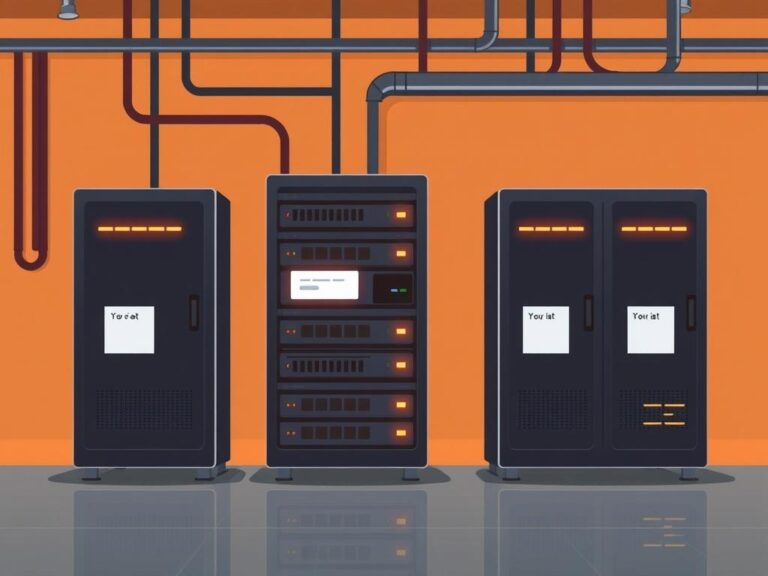
In today’s rapidly evolving digital landscape, keeping an eye on emerging tech trends is vital for anyone interested in innovation and progress. Daniel C. Moura, a thought leader known for his incisive reflections on technology, provides invaluable insights into what the future holds. Moura’s thoughts on emerging tech trends not only help illuminate the path forward but also empower readers to understand how these technologies might reshape industries, economies, and everyday life.
Daniel C. Moura emphasizes that the technology sector is no longer just about gadgets and software; it’s an ecosystem where artificial intelligence, blockchain, quantum computing, and edge computing intersect and redefine possibilities. Through his analysis, we get a sense of how these trends are shifting from theoretical concepts to practical applications that touch everything from healthcare to finance. Moura often highlights that understanding these developments is crucial, not just for tech enthusiasts but for anyone seeking to thrive in an increasingly tech-centric world.
Artificial Intelligence: The Cornerstone of Emerging Tech
When discussing emerging tech trends, Daniel C. Moura consistently places artificial intelligence (AI) front and center. AI, in his view, isn’t just a trend — it’s a transformative force that underpins many upcoming innovations. Moura’s thoughts on AI focus heavily on its ability to augment human capabilities, automate complex processes, and create smarter systems.
From natural language processing that enables chatbots to interact seamlessly with humans, to machine learning models that predict behavior and optimize operations, AI’s influence is pervasive. Moura argues that as AI becomes more sophisticated, issues surrounding ethics and transparency will also grow in importance. Governance frameworks need to evolve in tandem with technology, ensuring that AI serves humanity’s best interests.
Key AI Developments Highlighted by Moura
| Technology | Description | Potential Impact |
|---|---|---|
| Natural Language Processing (NLP) | Enables machines to understand and respond to human language | Enhanced customer service, more intuitive assistants |
| Machine Learning | Systems learn from data to improve over time | Predictive analytics, personalized experiences |
| Computer Vision | Interpretation of visual data by machines | Automation in manufacturing, healthcare diagnostics |
Blockchain Beyond Cryptocurrency

Daniel C. Moura’s thoughts on emerging tech trends often draw attention to blockchain technology’s evolution beyond its association with cryptocurrencies. While Bitcoin and Ethereum grabbed headlines years ago, Moura points out that blockchain’s true promise lies in its ability to enhance transparency, security, and decentralization in myriad applications.
He sees blockchain as a foundational technology for creating safer transactions and reducing fraud, especially in supply chains, voting, and identity verification. According to Moura, the decentralized nature of blockchain can break down barriers of trust between entities, fostering a new era of collaboration across sectors that historically operated in silos.
Applications of Blockchain Moura Highlights
- Supply Chain Management: Tracking the provenance of goods from origin to consumer.
- Digital Identity: Securing and simplifying identity verification processes online.
- Smart Contracts: Automated, self-executing agreements without intermediaries.
- Decentralized Finance (DeFi): Financial services without traditional banks.
Quantum Computing: Unlocking Unprecedented Potential
Quantum computing represents one of the most exciting yet still emerging tech trends that Daniel C. Moura discusses with great enthusiasm. Unlike classical computers, quantum computers use quantum bits—or qubits—that can exist in multiple states simultaneously, enabling them to solve certain complex problems exponentially faster.
Moura explains that while quantum computing is not yet mainstream, its implications could be revolutionary. From drug discovery and cryptography to optimization problems in logistics, quantum computing promises to tackle challenges that are currently insurmountable. However, Moura also cautions about the ethical, security, and accessibility questions raised by this powerful technology.
Potential Applications of Quantum Computing
| Sector | Use Case | Expected Benefit |
|---|---|---|
| Healthcare | Modeling molecular structures for new drugs | Faster drug development, personalized medicine |
| Cybersecurity | Quantum cryptography for secure communications | Enhanced data security against hacking |
| Logistics | Optimizing supply chains and route planning | Reduced costs, improved efficiency |
Edge Computing and the Shift to Distributed Technology
Another fascinating subject in Daniel C. Moura’s thoughts on emerging tech trends is edge computing. This approach moves data processing closer to the source (like IoT devices) instead of relying on centralized cloud servers. It enhances speed and reduces latency, crucial for real-time applications.
Moura states that as more devices become interconnected—think smart cities, autonomous vehicles, and industrial automation—the demand for swift, localized data analysis will soar. Edge computing supports this trend by enabling faster decision-making and reducing the bandwidth needed to send data to central servers.
Advantages of Edge Computing
- Lower Latency: Real-time responses in time-sensitive applications.
- Improved Privacy: Sensitive data processed locally reduces risks.
- Reduced Bandwidth Use: Less dependence on constant cloud connections.
- Reliability: Systems can operate independently even during connectivity outages.
Daniel C. Moura on the Integration of Emerging Tech Trends
What sets Daniel C. Moura’s analysis apart is his perspective on how these emerging tech trends don’t develop in isolation but interact dynamically. AI enhances blockchain by making smart contracts more adaptive; quantum computing could disrupt cryptography used in blockchain; and edge computing enables AI models to function seamlessly at the source. Moura encourages readers to think holistically about technology adoption, recognizing synergy and disruption simultaneously.
He also underscores the importance of addressing social implications—emphasizing education, ethical frameworks, and regulatory measures to ensure these innovations benefit society widely. Moura’s advocacy of a balanced approach—combining excitement for technological progress with caution and responsibility—is a message that resonates strongly in today’s context.
Summary Table: Emerging Tech Trends According to Daniel C. Moura
| Trend | Main Focus | Key Benefit | Challenge |
|---|---|---|---|
| Artificial Intelligence | Automation & Augmentation | Efficiency & Insight | Ethics & Transparency |
| Blockchain | Security & Decentralization | Trust & Transparency | Scalability & Regulation |
| Quantum Computing | Computational Power | Problem-Solving Capacity | Technological Maturity |
| Edge Computing | Localized Processing | Speed & Reliability | Infrastructure & Integration |
Conclusion
Daniel C. Moura’s thoughts on emerging tech trends offer a compelling roadmap to understanding the immense technological transformations on the horizon. By highlighting the interplay between AI, blockchain, quantum computing, and edge computing, Moura encourages us to think deeply about how these innovations will shape both our economies and societies. His balanced viewpoint reminds us that alongside the excitement of new possibilities, we must adopt a responsible approach—anticipating challenges, fostering inclusivity, and ensuring ethical development. For anyone interested in where technology is headed, Moura’s reflections underscore that the future promises profound change, and staying informed is the first step toward participating meaningfully in this evolving narrative.





Recent Comments